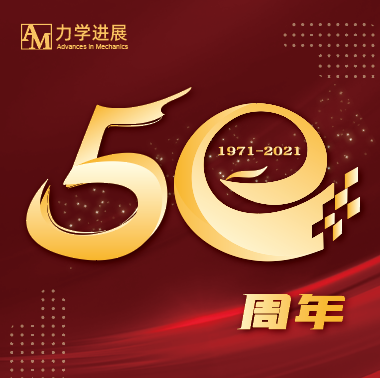|
1 Chowdhury D, Santen L, Schadschneider A. Statistical physics of vehicular traffic and some related systems. Physics Reports, 2000, 329: 199-329
|
|
2 Helbing D. Traffic and related self-driven many-particle systems. Reviews of Modern Physics, 2001, 73(4): 1067-1141
|
|
3 Bellomo N, Delitala M. On the mathematical theory of vehicular traffic flow I. Fluid dynamics and kinetic modeling. Mathematical Models and Methods in Applied Sciences.2002, 12 (12): 1801-1843
|
|
4 Shvetsov V I. Mathematical modeling of traffic flows. Automation and Remote Control, 2003, 64(11): 1651-1689
|
|
5 Nagatani T. The physics of traffic jams. Reports on Progress in Physics, 2002, 65: 1331-1386
|
|
6 Nagel K. Still following: Approaches to traffic flow and traffic jam modeling. Operations Research, 2003, 51(5):685-710
|
|
7 Bando M, Hasebe K, Nakanishi K, et al. Delay of vehicle motion in traffic dynamics. Japan J Indust Appl Math,2000, 17: 275-294
|
|
8 Green M. “How long does it take to stop?” methodological analysis of driver perception-brake times. Transportation Human Factors, 2000, 2 (3): 95-216
|
|
9 Mahmassani H. Transportation and Traffic Theory: Flow, Dynamics and Human Interaction. The Netherlands: Elsevier,2005. 245-266
|
|
10 Sipahi R, Niculescu S I. Analytical stability study of a deterministic car following model under multiple delay interactions. At Invited Session Traffic Dynamics under PPresence of Time Delays, IFAC Time Delay Systems Workshop, Italy, 2006
|
|
11 Sipahi R, Niculescu S I. Some remarks on the characterization of delay interactions in deterministic car following models, MTNS, Kyoto, Japan, 2006
|
|
12 Greenshields B D. Reaction time and automobile driving. Journal of Applied Psychology, 1936, 20:353358
|
|
13 Greenshields B D. Reaction time and traffic behavior. Civil Engineering, 1935, 7(6): 384386
|
|
14 Davis L C. Modifications of the optimal velocity traffic model to include delay due to driver reaction time. Physica A, 2003, 319: 557-567
|
|
15 Mehmood A, Easa S M. Modeling reaction time in carfollowing behaviour based on human factors. International Journal of Applied Science, Engineering and Technology,2009, 5(2): 93-101
|
|
16 丹尼尔L. 鸠洛夫著, 蒋璜等译. 交通流理论. 北京: 人民交通 出版社, 1983
|
|
17 张生瑞, 邵春福, 周伟. 交通流理论与方法. 北京: 中国铁道 出社, 2010
|
|
18 李力, 姜锐, 贾斌, 等. 现代交通流理论与应用, 卷I—高速 公路交通流. 北京: 清华大学出版社, 2011
|
|
19 Rothery R E. Traffic Flow Theory, 2nd edn. Transportation Research Board Special Report 165. 1998
|
|
20 Subramanian H. Estimation of car following models. Massachusetts Institute of Technology, 1996. 1-93
|
|
21 Brackstone M, McDonald M. Car-following: A historical review. Transportation Research Part F 2, 1999, 2(4):181-196
|
|
22 Hoogendoorn S P, Bovy P H L. State-of-the-art of vehicular traffic flow modelling. Journal of Systems and Control Engineering, 2001, 25(4): 283-304
|
|
23 金春霞, 王慧. 跟车模型及其稳定性分析综述. 交通运输系 统工程与信息, 2001, 11(13):220-225
|
|
24 张智勇, 荣建, 任福田. 跟车模型研究综述. 公路交通科技,2004, 21(4) :108-113
|
|
25 Tamp`ere C. Human-kinetic multiclass trafficflow theory and modelling: With application to advanced driver assistance systems in Congestion. The Netherlands: Thesis Series, 2004
|
|
26 Toledo T. Driving behaviour: Models and challenges. Transport Reviews, 2007, 27(1): 65-84
|
|
27 Yanlin W, Tiejun W. Car-following models of vehicular traffic. Journal of Zhejiang University Science,2006, 3(4):412-417
|
|
28 Baogui C, Zhaosheng Y. Car-following models study progress. In: Proceedings of the Second International Symposium on Knowledge Acquisition and Modeling,2009. 190-193
|
|
29 Atay F M. Complex Time Delay Systems. Berlin: Springer, 2010. 297-320
|
|
30 Pipes L A. An operational analysis of traffic dynamics. Journal of Applied Physics, 1953, 24(3): 274-281
|
|
31 Chandler R E, Herman R, Montroll E W. Traffic dynamics: Analysis of stability in car following.Operations Researsh,1958, 7(1): 165-184
|
|
32 Gazis D C, Herman R, Rothery R W. Non-linear follow the leader models of traffic flow. Operations Research,1961, 9: 545-567
|
|
33 Zhang X Y, David F J. Stability analysis of the classical car following model. Transpn Res. B,1997, 31(6): 441-462
|
|
34 Addison P S, Low D J. A novel nonlinear car following model. Chaos, 1998, 8(4): 791-799
|
|
35 Addison P S, Low D J. A nonlinear temporal headway model of traffic dynamics. Nonlinear Dynamics, 1998, 16:127-151
|
|
36 凌代俭,肖鹏. 一类非线性车辆跟驰模型的稳定性与分岔特 性. 交通运输学报, 2009, 7(4): 6-11
|
|
37 Gazis D C, Herman R, Potts R B. Car following theory of steady state traffic flow. Operations Research, 1959.499-505
|
|
38 Edie L C. Car following and steady state theory for noncongested traffic. Operations Research, 1961, 9: 66-76
|
|
39 Aron M. Car following in an urban network: simulation and experiments. In Proceedings of Seminar D, 16th, PTRC Meeting, 1988. 27-39
|
|
40 Bando M, Hasebe K, Nakayama A. Dynamical model of traffic congestion and numerical simulation. Phys. Rev. E, 1995, 51: 1035-1042
|
|
41 Bando M, Hasebe K, Nakanishi K, et al. Analysis of optimal velocity model with explicit delay. Phys Rev E, 1998,58: 5429-5435
|
|
42 Davis L C. Comment on “Analysis of optimal velocity model with explicit delay”. Phys Rev E, 2002, 66: 038101
|
|
43 Orosz G, Wilson R E, Krauskopf B. Global bifurcation investigation of an optimal velocity traffic model with driver reaction time.Phys Rev E, 2004, 70 :026204
|
|
44 Orosz G, Wilson R E, Krauskopf B. Bifurcation and multiple trafficjams in a car-following model with reaction-time delay. Physica D, 2005, 211(3-4): 277-293
|
|
45 Orosz G, Stepan G. Hopf bifurcation calculations in delayed systems with translational symmetry. J. Nonlinear Sci, 2004, 14: 505-528
|
|
46 Orosz G, Stepan G. Subcritical Hopf bifurcations in a carfollowing model with reaction-time delay. Proceedings of the Royal Society of London A, 2006, 462(2073): 2643-2670
|
|
47 Orosz G, Krauskopf B, Wilson R E.Traffic jams dynamics in a carfollowing model with reaction-time delay and stochasticity of drivers. Sixth IFAC Workshop on TimeDelay Systems, P Pepe and A Germani eds, IFAC, 2006
|
|
48 Orosz G. Exciting traffic jams: Nonlinear phenomena behind traffic jam formation on highways. Phys Rev E, 2009,80: 046205
|
|
49 Orosz G, Moehlis J, Bullo F. Robotic reactions: Delayinduced patterns in autonomous vehicle systems. Phys. Rev. E, 2010, 81: 025204
|
|
50 Orosz G, Moehlis J, Bullo F, et al. Dynamics of delayed car-following models: human vs. robotic drivers. ENOC2011, Rome, Italy. 2011. 24-29
|
|
51 Engelborghs K, Luzyanina T, Roose D. Numerical bifurcation analysis of delay differential equations using DDEBIFTOOL. ACM Transactions on Mathematical Software,2002(2): 1-21
|
|
52 Roose D, Szalai R, In Numerical Continuation Methods for Dynamical Systems. Springer, New York, 2007. 359-399
|
|
53 Wagner P. Fluid-dynamical and microscopic description of traffic flow: A data-driven comparison. Phil Trans R Soc A, 2011(368): 4481-4495
|
|
54 Shamoto D, Tomoeda A, Nishi R, et al. Car-following model with relative-velocity effect and its experimental verification. Phys Rev E 2011, 83: 046105
|
|
55 Treiber M, Hennecke A, Helbing D. Congested traffic states in empirical observations and microscopic simulations. Phys. Rev. E, 2000, 62: 1805-1824
|
|
56 Treiber M, Kesting A, Helbing D. Delays, inaccuracies and anticipation in microscopic traffic models. Physica A, 2006, 360: 71-88
|
|
57 Kesting A, Treiber M, Helbing D. Enhanced intelligent driver model to access the impsct of driving strategies on traffic capacity. Phil Trans R Soc A, 2010(368): 4585-4605
|
|
58 Konishi K, Kokame H, Hirata K. Decentralized delayedfeedback control of an optimal velocity traffic model. The European Physical Journal B, 2000, 15: 715-722
|
|
59 Herman R, Montroll E W, Potts R B, etal. Traffic dynamics: analysis of stability in car following. Operations Research, 1959, 7 (1): 86-106
|
|
60 Lenz H, Wagner C K, Sollacher R. Multi-anticipative carfollowing model. The European Physical Journal B, 1999,7(2): 331-335
|
|
61 Sawada S. Nonlinear analysis of a differential-difference equation with next-nearest-neighbour interaction for traffic flow. Journal of Physics A: Mathematical and General,2001, 34: 11253-11259
|
|
62 Ge H X, Dai S Q, Dong L Y, et al. Stabilization effect of traffic flow in an extended car-following model based on an intelligent transportation system application. Phys. Rev. E, 2004, 70: 066134
|
|
63 Wilson R E, Berg P, Hooper S, et al. Many-neighbour interaction and nonlocality in traffic models. The European Physical Journal B, 2004 39(3): 397-408
|
|
64 Lei Y, Zhongke S. Nonlinear analysis of an extended traffic flow model in ITS. Chaos, Solitons and Fractals, 2008,36: 550-558
|
|
65 Newell G F. Nonlinear effects in the dynamics of car following. Operations Research, 1961. 207-229
|
|
66 Tomer E, Safonov L, Havlin S. Presence of many stable non-homogeneous states in an inertial car following model. Phys. Rev. Lett., 2000, 84: 382-385
|
|
67 Safonov L A, Tomer E. Multifractal chaotic attractors in a system of delay differential equations modeling road traffic. Chaos, 2002, 12(4): 1006-1014
|
|
68 刘力军, 王春玉, 贺国光. 交通流模型中分岔现象研究综 述.系统工程, 2006, 24(8): 23-26
|
|
69 Orosz G, Wilson R E, Stepan G. Traffic jams: dynamics and control. Phil Trans R Soc A, 2010, (368): 4455-4479
|
|
70 Hermann M, Kerner B S. Local cluster effect in different traffic flow models. Physica A, 1998, 255: 163-188
|
|
71 Igarashi Y, Itoh K, Nakanishi K. Bifurcation phenomena in the optimal velocity model for traffic flow, Phys Rev E,2001, 64:047102
|
|
72 Gasser I,Sirito G,Werner B. Bifurcation analysis of a class of “car following” traffic models. Physica D, 2004, 197:222-241
|
|
73 Gasser I, Sirito G, Werner B. Car following traffic models II: Variable reaction times and aggressive drivers. Bulletin of the Institute of Mathematics Academia Sinica (New Series),2007, 2(2): 587-607
|
|
74 Gasser I, Werner B. Dynamical phenomena induced by bottleneck. Phil Trans R soc A, 2010, 368: 4543-4562
|
|
75 Sipahi R, Niculescu S I. Slow time-varying delay effects robust stability characterization of deterministic car following models. In: Proceedings of the 2006 IEEE, International Conference on Control Applications, Munich, Germany, 2006
|
|
76 Sasoh A. Impact of unsteady disturbance on multi-lane traffic flow. J. Phys. Soc. Jpn., 2002, 71: 989-996
|
|
77 Jamison S, McCartney M. A vehicle overtaking model of traffic dynamics. Chaos, 2007, 17: 033116
|
|
78 Wilson R E. Mechanisms for spatio-temporal pattern formation in highway traffic models. Phil TransR Soc A,2008, 366: 2017-2032
|
|
79 Zhou J, Peng H. Range policy of adaptive cruise control vehicles for improved flow stability and string stability. IEEE Trans Intell Transpor Syst, 2005(6): 229-237
|
|
80 Batista M, Twedy E. Optimal velocity functions for carfollowing models. J Zhejiang Univ-Sci A (Appl Phys & Eng), 2010, (7): 520-529
|
|
81 Faria T. Normal forms for retarded functional differential equations with parameters and applications to Hopf bifurcation, Journal of Differential Equations, 1995, 122:181-200
|
|
82 Das S L, Chatterjee A. Multiple scales without center manifold reductions for delay differential equations near Hopf bifurcations, Nonlinear Dynamics, 2002, 30: 323-335
|
|
83 Nayfeh A, Order reduction of retarded nonlinear systemsthe method of multiple scales versus center-manifold reduction. Nonlinear Dynamics, 2008, 51: 483-500
|
|
84 Xu J, Chung K W, Chan C L. A perturbation-incremental scheme for studying hopf bifurcation in delay differential systems, Science in China Series E: Technological Sciences,2009, 3: 698-708
|
|
85 Schonhof M, Helbing D. Criticism of three-phase traffic theory. Transportation Research Part B, 2009, 43: 784-797
|
|
86 Kerner B S. Three-phase traffic theory and highway capacity. Physica A, 2004, 333:379-440
|
|
87 Kerner B S. Introduction to Modern Traffic Flow Theory and Control: The Long Road to Three-phase traffic theory. Springer, 2009
|
|
88 Boccalettia S, Kurthsc J, Osipovd G, etal. The synchronization of chaotic systems. Physics Reports, 2002, 366:1-101
|
|
89 赵艳影, 徐鉴. 利用时滞反馈控制自参数振动系统的振动. 力 学学报, 2011, 43(5): 894-904
|

 点击查看大图
点击查看大图




 下载:
下载:
